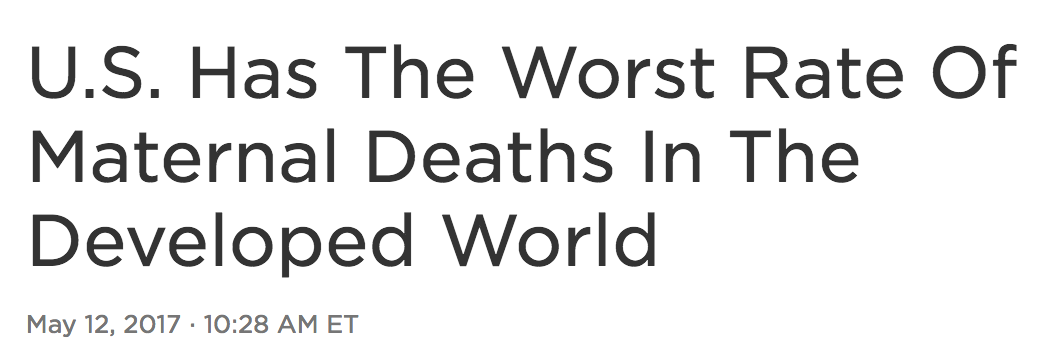Melissa—when motherhood could kill
On the older side of the cemetery here, they don’t make you do math. Instead of a born and died date, gravestones list the age of the deceased and the year he or she died. And that’s how I met Melissa, who passed away in 1836:
Aged 22 years, one month, 28 days
I often talk about the power of specificity. Does that specificity hit you in the gut like it did me?
The almost-eroded engraving on Melissa’s white marble obelisk identifies her as “consort of” the man whose taller stone stands to her left. A tiny obelisk between them hints at the cause of Melissa’s death.
Since Melissa’s time, we’ve made great strides in helping mothers survive. In 1917, about 6% of mothers in this country died from complications of childbirth; 90 years later that figure had dropped to 0.12%.
But in the last 25 years, maternal mortality has rocketed back up in the United States, even as it declined in the rest of the world. Indeed, tennis great Serena Williams, who can surely afford the best healthcare available, almost died after giving birth to her daughter. (Apparently doctors treat people of color differently, even if they’re billionaires. Or other doctors. But that’s a subject for another day.)
If our elected officials had any sense of shame, that headline—from a piece jointly reported by NPR and Pro Publica—would have sparked a “war on maternal mortality,” with a Maternal Mortality Czar to hold the stakeholders accountable for winning.
But…crickets.
Or perhaps people in the administration just read the data and thought, “Hey—we’re #1!”
Of course, ending access to safe, legal abortion will only exacerbate the problem. And should the president succeed in adding another justice to the Supreme Court, that’s exactly what will happen.
Women dying in childbirth; women dying as they try to avoid childbirth.
How many more Melissas will die before we pay attention to women’s healthcare needs?
What a freaking waste.
